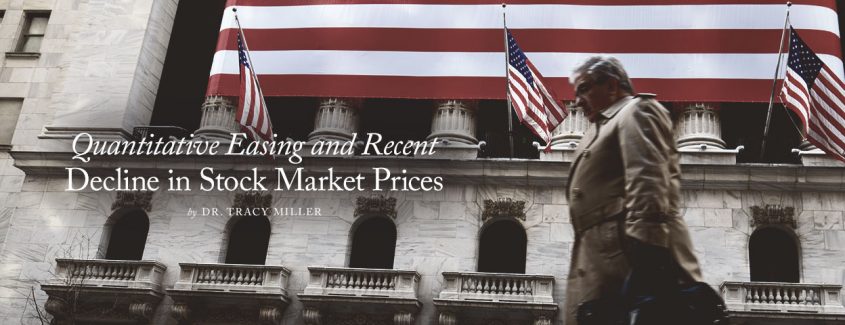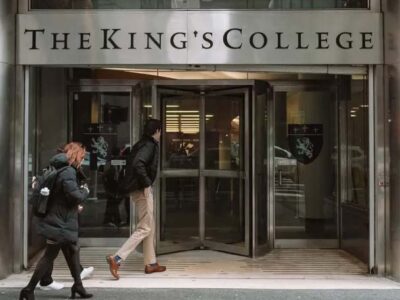
The first two weeks of January 2016 were the worst beginning of a year ever for the stock market. If the month had not ended with a big market rebound, it would have been even worse. Some people blame the Federal Reserve and its interest rate hike in December. While economic fundamentals indeed did not justify the Fed decision to raise interest rates, the rate hike is not the reason for the market’s poor performance. Rather, the recent declines should be understood as part of a deflation in asset prices that were too high because of five years of quantitative easing by the Federal Reserve that began in 2008.
In a well-functioning stock market, the price of each company’s shares reflects the expected future earnings of that company. Good news about a company’s future prospects causes the stock price to rise, while bad news causes it to fall. During periods when the economy and economic policy are stable, some companies experience increases in expected earnings and other companies experience decreases. As a result, some stock prices should be rising and others falling. In a growing economy, the number of companies with improving earnings will tend to exceed those with declines so that on average stock prices are rising.
8-minute video: Main Street USA and the Fed (QE 3)
When prices of most stocks move in the same direction together, it is due to broader economic conditions that affect all companies. Recent sharp declines in stock prices can be attributed to the effect of monetary policy.
For the last year and a half the money supply and monetary base have been remarkably stable. But stable money, by itself, is not the cause of the recent decline in the stock market. Instead, it can be blamed on the fact that the stable monetary policy followed the huge expansion of bank reserves that resulted from quantitative easing (QE). To stimulate the economy, the Federal Reserve purchased enormous quantities of government bonds and mortgage-backed securities during three different periods beginning in 2008 and ending in 2014. Investors used much of the newly created money to bid up the prices of financial assets (such as stocks) to levels above where they were before they collapsed during the Great Recession.
Although some companies did experience increased earnings prospects, a considerable share of the increase in stock prices in the last few years was due to investors bidding up stock prices because, by lowering interest rates, QE left them with few good alternative ways to earn a decent return on their savings. Many corporations took advantage of low interest rates to buy back their own shares. Because of the actions of investors and corporate buybacks, prices for most companies rose faster than their earnings. When companies use cash or debt to buy back their own shares, they invest less in capital that would raise productivity and earnings.
Although the U.S. economy has been recovering from the last recession, incomes and spending of Americans have been growing too slowly to raise corporate earnings enough to justify the high stock prices of most companies. Part of the reason incomes and spending have grown slowly is that since 2007 productivity has not been rising very fast due to lack of capital investment. In addition, when the Federal Reserve ended QE in late 2014, the dollar started to rise relative to other world currencies, raising the price of imported goods from the United States to other countries. This also contributed to falling earnings of many U.S. companies, necessitating a decline in their share prices.
The declining stock market may be indicating an impending recession for the U.S. economy. According to the Wall Street Journal, “Every U.S. recession since World War II has been foretold by sharp declines in industrial production, corporate profits and the stock market.” These sharp declines were caused by excessive investment fueled by monetary expansion, which resulted in economic booms that were unsustainable.
As chair of the Federal Reserve Board of Governors, Ben Bernanke claimed that QE was necessary to promote economic recovery following the great recession. Other government policies, however, including extended unemployment insurance and healthcare reform, along with low rates of capital investment, contributed to an economic recovery that was weaker than those following prior recessions. The monetary expansion caused stock prices to rise more rapidly than was consistent with the growth of the output of the economy as a whole. This is why those prices have fallen and may fall further in the future.
If the Federal Reserve, now led by Janet Yellen, decides to pursue another round of quantitative easing, share prices might resume their increase, but it may be too late for that. At some point, investors will stop being fooled by Fed policy and realize that without the prospects of a more rapidly growing economy, no good reason exists for stock prices to continue to rise or even to stay at their current high level.





